A passion for the great outdoors is usually enough to spark a foray into fishing, in general, and perhaps fly fishing, in particular. Those who’ve logged real time in waders with a pole in hand know that it’s almost always about everything but the fish. It’s about the sound of the rushing river; the critters ambling, swimming, or flying about; and the taking time to absorb the soothing rhythms of the natural world.
A fulfilling or challenging hike or camping trip will get you close to nature, but through fly fishing, you’ll get even closer. First, you’ll learn to speak the language of water, gaining an appreciation for all things aquatic and their vital place in the circle of life. Later, should you stick with it, you might even be able to predict insect hatches and experience the unrivaled joy of catching a fish with a fly that you tied yourself (or at least mindfully selected from your box).
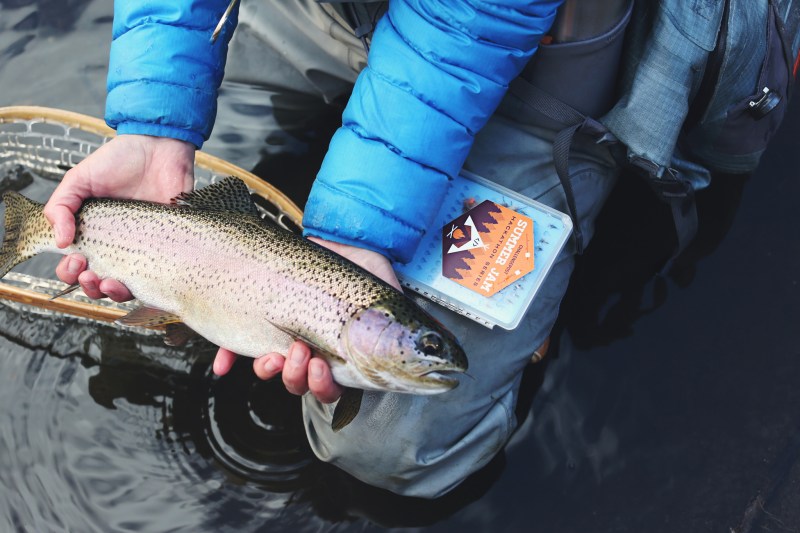
There’s an artistry to the activity, for sure. Some of the best scenes in A River Runs Through It (a film worth watching and a book worth reading) depict the beauty of casting amid some of the prettiest stretches of water in Montana. It’s enough to make you change up the priority order of your hobbies entirely.
But there’s a ruggedness to the sport, too. It can take you to some remote places. You’ll witness things you’d previously only seen on the Discovery Channel, from osprey snatching trout to bison fording rivers. You’ll learn the importance of patience, timing, technique, and presentation, the value of tying a good knot, how to fall down with dignity, and how to tell a good old-fashioned fishing-centric tall tale.
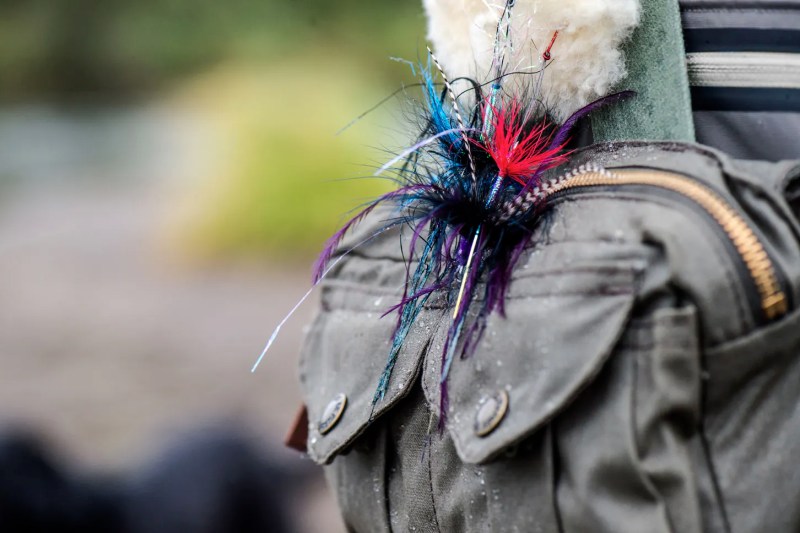
Gearing up
Waders are quite important unless you’re able to stick to warmer waters. Companies like make great versions, and a good pair ought to last at least a decade. A good vest is paramount, too, but what you opt to fill it with is a little more complicated.
There’s a lot of gear in fly fishing, but there doesn’t have to be. The few tools you’ll need include clippers for cutting line, forceps for taking flies out of trout mouths, floatant for keeping dry flies above water, a leader straightener, and some tippet. Zingers are also great for attaching some of these tools (forceps and clippers especially) to your vest for easy access.
You’ll also need a few leaders, the approximately 7- to 10-foot line of tapered filament that connects to your fly-line and, ultimately, a fly. It’s nice to have a few different sizes as you’re likely to be fishing different-sized flies, and inevitably as you try a different pattern or lose flies, you can eat up a leader pretty quickly.
A good outdoor hat is paramount, as is a good pair of men’s polarized glasses. The shades will dampen the glare of the water, allow you to spot fish better, and protect your eyes from the occasional stray cast. You’ll also want a good pair of boots. Be sure to order on the large side if you’ll be wearing them with waders, and check with your local Department of Fish and Wildlife to confirm what types of soles are allowed. Felt soles, for example, while great for gripping smooth river rock, are not legal in all states.
Of course, you’ll need a rod. There are plenty of great makers out there with good warranties, so we’ll leave the brand up to you. For a size that can take you just about anywhere, start with a five-weight that’s somewhere between 8-9 feet in length.
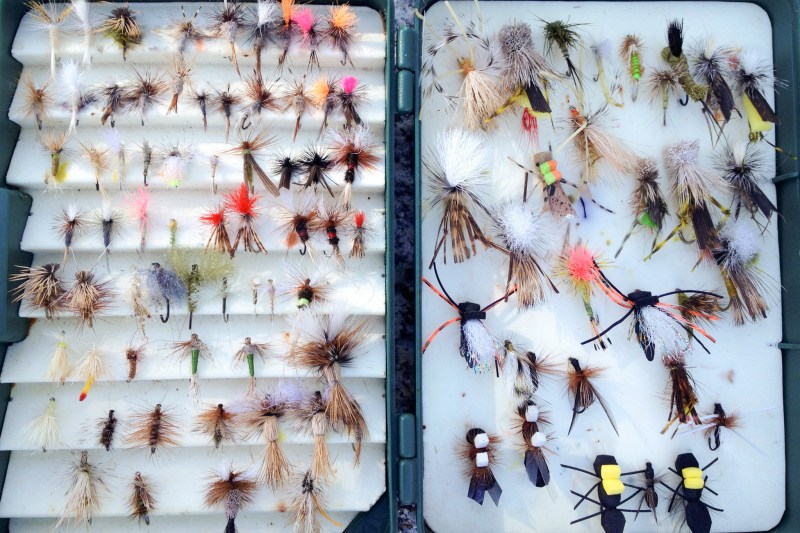
Fly fishing flies
There are way too many fly patterns out there, and they’re not exactly cheap. A typical day on the water can claim quite a few of these buggers, too, as you’ll soon find after snagging them on logs or having them chewed up by fish. For a lot of fly fishers, the number of flies in their boxes is a source of pride — a veritable wine collection of sorts. But I’m here to tell you from experience that you needn’t go overboard, especially if you’re just starting out on your journey to pro fly fisher. You can more than get by with just a few patterns at your disposal.
Essentially, flies are split between those that float and those that sink. The former, known as dry flies, resemble bugs that sit on top of the water, like mayflies and caddisflies. The latter, nymphs, resemble a different type of bug (or at least a different phase in their lives) and sink beneath the surface. With these, the fly is usually too submerged to make it out, so you often attach a strike indicator to detect fish activity.
Which five flies could I not live without? Start with an Adams. It’s a fly that looks like a lot of bugs, hence its value. It has far and away caught me the most fish of any pattern and casts beautifully. Next, an elk hair caddis, either in brown, green, or gray. Another must-have dry fly is an attractor, like a stimulator. This type of fly doesn’t resemble an actual bug so much as it aims to catch the eye of a fish with its colorful makeup. A great go-to nymph is a wooly bugger, which you can fish like a streamer if it’s large enough (and a bead-head version will make it sink faster). Finally, a good terrestrial, like a hopper or ant, is fantastic, especially if you fish in the summer.
Fly sizes are sold by number and get smaller as the number increases. So a size 4 stonefly would be much bigger than a size 16 blue-winged olive, for example. A smattering in the 8-14 range usually suffices.
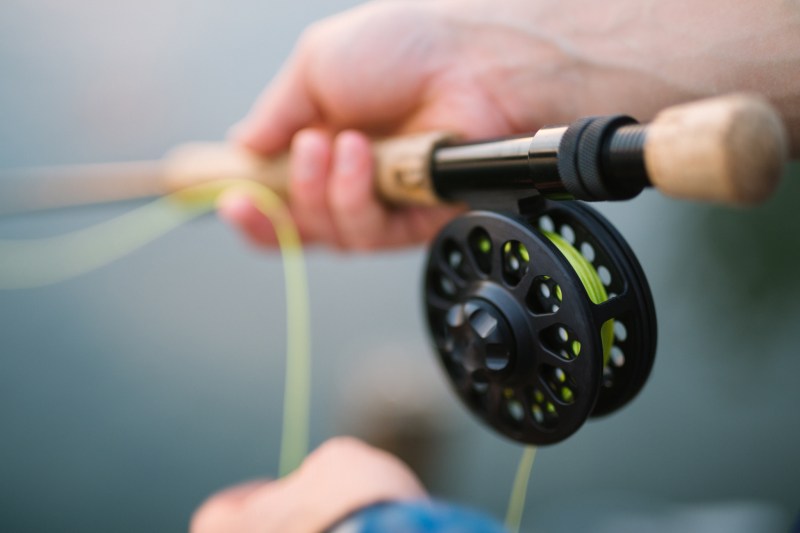
Casting your fly fishing rod
Like a golf swing or bowling release, your fly fishing cast can always get better. For starters, learn a few of the basics. You don’t need to be double-haul casting to the opposite bank of the big river, but you should be able to pull off two very important maneuvers.
The first is a roll cast, great for fishing in tight quarters. When the stream is small or there’s vegetation all around, this type of cast can keep your fly drifting naturally with little more than a flick of the wrist. There’s a basic cast, too, which is key is getting your fly on the water. Keeping your wrist tight or loose isn’t really as important as a nice abrupt stop, which causes the line to fully extend before hitting the water.
As for where to cast? Think like a fish. They tend to hang out in calmer stretches of water where they can observe bugs drifting by and decide when and what to eat. Look for eddies (pools behind rocks), riffles, and deep banks where fish are protected but also have access to a snack. Obviously, if you spot feeding fish, that’s a good place to try. And be mindful of your shadow while fishing — it can spook your potential catch.
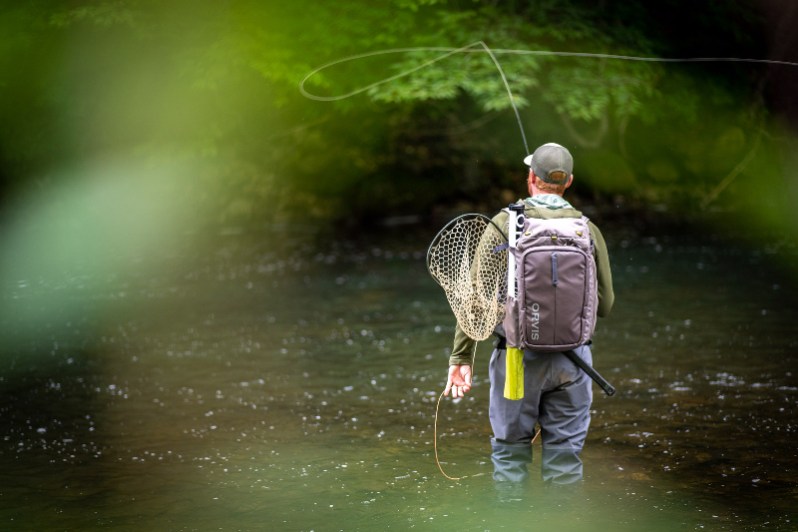
More wisdom on fly fishing
There are some great how-to publications and informative (and often entertaining) outlets devoted to the sport. The Drake is a great stop, as are the books like the Orvis Fly-Fishing Guide. Should you reach a point where you want to start tying some of your own (it’s a great pastime), this book is a perfect launchpad.
Many fly shops host classes or can direct you to sessions that will improve your technique for things like casting, fly-tying, knot-tying, and more. When you do head out, pack along a good reusable water bottle and a can or two of your favorite wine or beer for toasting a day catching fish (or at least pursuing them). It is, after all, more about the journey than the destination, right?
Editors' Recommendations
- Here’s why you need to take trekking poles on the trail
- Here’s everything you need to pack for a trip to Yellowstone National Park
- This is everything we know about the PGA Tour and LIV Golf merger
- Do you need an electric trike? We tested one out to see
- A beginner’s guide on how to shift bike gears like a pro



